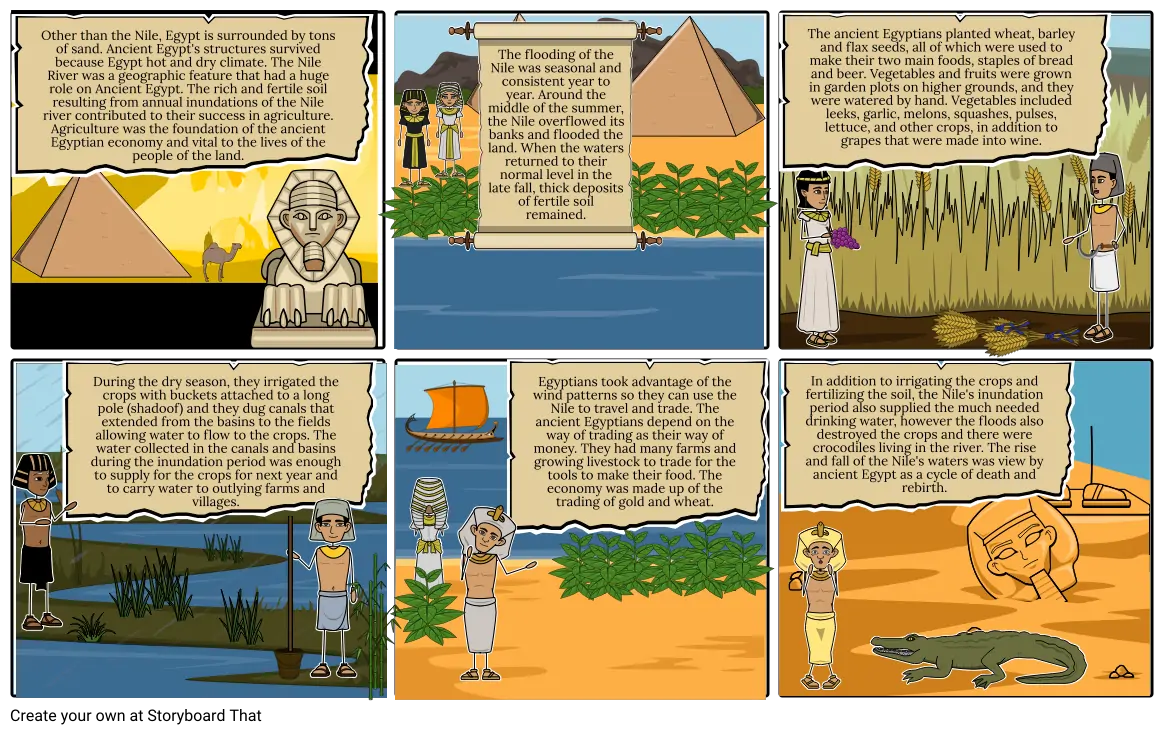Ancient Egypt agriculture and the Nile

Texte du Storyboard
- Other than the Nile, Egypt is surrounded by tons of sand. Ancient Egypt's structures survived because Egypt hot and dry climate. The Nile River was a geographic feature that had a huge role on Ancient Egypt. The rich and fertile soil resulting from annual inundations of the Nile river contributed to their success in agriculture. Agriculture was the foundation of the ancient Egyptian economy and vital to the lives of the people of the land.
- The flooding of the Nile was seasonal and consistent year to year. Around the middle of the summer, the Nile overflowed its banks and flooded the land. When the waters returned to their normal level in the late fall, thick deposits of fertile soil remained.
- The ancient Egyptians planted wheat, barley and flax seeds, all of which were used to make their two main foods, staples of bread and beer. Vegetables and fruits were grown in garden plots on higher grounds, and they were watered by hand. Vegetables included leeks, garlic, melons, squashes, pulses, lettuce, and other crops, in addition to grapes that were made into wine.
- During the dry season, they irrigated the crops with buckets attached to a long pole (shadoof) and they dug canals that extended from the basins to the fields allowing water to flow to the crops. The water collected in the canals and basins during the inundation period was enough to supply for the crops for next year and to carry water to outlying farms and villages.
- Egyptians took advantage of the wind patterns so they can use the Nile to travel and trade. The ancient Egyptians depend on the way of trading as their way of money. They had many farms and growing livestock to trade for the tools to make their food. The economy was made up of the trading of gold and wheat.
- In addition to irrigating the crops and fertilizing the soil, the Nile's inundation period also supplied the much needed drinking water, however the floods also destroyed the crops and there were crocodiles living in the river. The rise and fall of the Nile's waters was view by ancient Egypt as a cycle of death and rebirth.
Plus de 30 millions de storyboards créés

